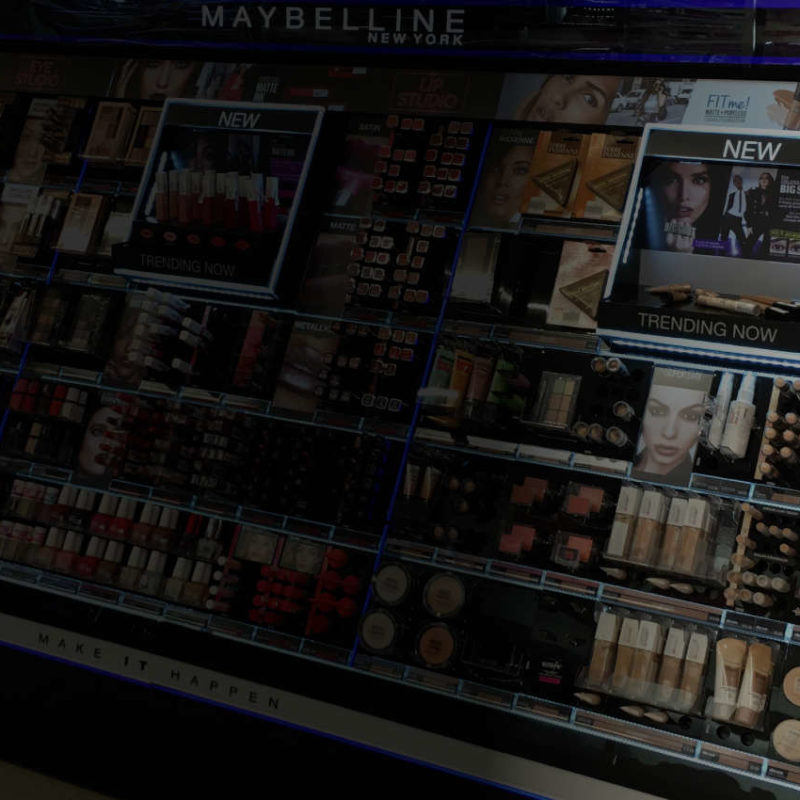DIAM
Designers and manufacturers of point of sale displays for some of the world’s leading cosmetics, jewellery and electronics brands, DIAM sees a significant return on investment from EFACS E/8.
Designers and manufacturers of point of sale displays for some of the world’s leading cosmetics, jewellery and electronics brands, DIAM sees a significant return on investment from EFACS E/8.
Part of the 3,200-employee DIAM International group, Loughborough-based DIAM UK designs and manufactures point of sale displays for some of the world’s leading cosmetics, jewellery and electronics brands.
The business had relied on a combination of a time and attendance system and a Sage Line 500 ERP system since the late 1990s, explains Chris Peace, Senior Project Manager at DIAM, but by 2016 had come to realise that it had outgrown what these could offer.
“We’re a very fast-paced and project-oriented business,” he notes. “Increasingly, it was becoming clear that what we had simply wasn’t fit for purpose.”
The problem, he explains, was that the Sage system had been heavily customised to meet DIAM’s existing requirements when the system had been selected. But in the intervening 20 years, DIAM had changed significantly, and in ways that couldn’t have been anticipated at the time.
“It wasn’t flexible enough to accommodate how work was actually taking place today. So consequently, a lot of activity was taking place outside the Sage system – in Microsoft Excel, for instance, and in some SQL databases that we maintained.”
Adding to the pressure was the fact that the Sage system’s own underlying SQL database was not supported by the business’s new server platform, necessitating a major data migration project if DIAM were to remain with the Sage system.
“All the arguments pointed to the fact that it was time to upgrade to something more modern, and something that was more suited to the project-based way in which we actually worked these days,” sums up Chris.
Accordingly, he explains, a team undertook a review of the ERP marketplace, identifying seven major ERP systems to be investigated more closely. By October 2017 the decision had been taken – after a thorough review, Exel Computer Systems’ EFACS E/8 ERP system was selected as the best option for the business.

First, explains Chris, EFACS E/8 met DIAM’s demanding requirements in terms of project-based working. A number of solutions claim to have project functionality, he notes, but then don’t back this up with adequate capability.
Second, it was clear that Exel’s powerful customisation and workflow toolsets could genuinely enable the business to work in the way that it wanted to, flexibly and reactively.
And thirdly, he adds, DIAM could see the advantages of working directly with a UK-based software developer.
“We’re not a typical manufacturing business working in a typical way; from the outset, we knew that we had some fairly complex requirements – especially in regard to material allocation – and that these requirements could test any provider’s solution,” he explains. “An individual project can have multiple contracts and multiple works orders – stretching into the hundreds – and it was vital that the selected system could support this.”
With the contract signed, DIAM didn’t lose any time. A project room was quickly established, containing six workstations linked to a test server, and a project team duly began work.
Right from the start, explains Chris, DIAM was determined to make full use of Exel’s customisation and implementation support toolsets, and made heavy use of Exel’s ADAPT capability, which allows users to surround screens and forms with programmable logic, permitting it to auto-populate and auto-complete data entry fields, based on earlier user input.
The business also had extensive workflow aspirations, he relates, and engaged Exel to undertake this programming for them. “We felt that we didn’t have sufficient spare in-house SQL resources,” he notes. “Given the productivity benefits, it made sense to have the code developed for us.”
Also vital to the project’s success, explains Chris, was EFACS E/8’s ability to mirror functionality that DIAM had developed to automatically allocate and de-allocate components and materials for particular projects.
“We used what we called a ‘virtual warehouse’, termed CloudWIP, to bypass the need to allocate against specific works orders, and we did a lot of work with Exel to build the allocation and de-allocation logic that we wanted. It’s really reduced the complexity of how allocation and picking take place.”
In August 2018, after three test data uploads had successfully taken place, DIAM’s new EFACS E/8 ERP system went live.


To fully appreciate the benefits and ROI of the new system, says Chris, it’s necessary to reflect on how things were done prior to the go live.
Orders and projects were created in the Sage Line 500 system, and then project-specific materials requirements planning took place within a self-developed SQL-based extension to the Sage system, internally known as ‘Source’. Finally, a lot of workflow and planning activity then took place within a suite of Excel spreadsheets.
“We had effectively developed the majority of an ERP system, and built it in Excel spreadsheets and SQL,” he sums up. “It was highly complicated, labour-intensive and required a lot of cross-checking to make sure that data was accurate. Now, it’s all taking place in a single system – a system that is more powerful, has more capabilities and which delivers far more information and reports: the ROI is significant.”
Contact our team of experts to discuss your business requirements. Our team will discuss how Exel’s ERP & Field Service Management software can benefit your business processes and arrange a product demonstration.
Contact Us